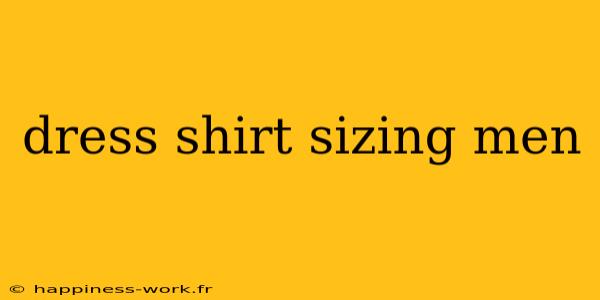Choosing the right size for a dress shirt can significantly impact your overall look and comfort. Whether you're dressing for a business meeting, a wedding, or a casual outing, a well-fitted dress shirt can elevate your style. In this guide, we will explore the key aspects of men's dress shirt sizing, answer common questions, and provide additional insights to help you make an informed choice.
Understanding Dress Shirt Sizes
Men’s dress shirts are typically sized using a combination of neck size and sleeve length. For instance, a size 15/34 indicates a neck size of 15 inches and a sleeve length of 34 inches. But what if you're unsure of your measurements?
How Do I Measure My Neck Size?
To measure your neck size accurately:
- Use a flexible measuring tape.
- Wrap it around the base of your neck, ensuring it's snug but not tight.
- Record the measurement to the nearest half-inch.
Pro Tip: If you don’t have a measuring tape, use a piece of string and then measure it against a ruler.
What About Sleeve Length?
To measure sleeve length:
- Start from the back of your neck and measure across your shoulder to your wrist.
- Keep your arm slightly bent and make sure to allow for ease.
What Size Should I Choose?
If your neck size is 15 inches and your sleeve length is 34 inches, you'd typically look for a size labeled 15/34. However, consider the fit style—whether you prefer a slim fit, regular fit, or relaxed fit—as this can impact the sizing as well.
Common Questions and Answers
Below, we've answered some common questions regarding dress shirt sizing, using information inspired by contributors from WikiHow:
What if I'm Between Sizes?
If you find yourself between two sizes, experts recommend opting for the larger size. This allows for extra comfort, especially if you're planning on moving around a lot.
What is the Difference Between Slim Fit and Regular Fit?
- Slim Fit: Tapered design, providing a more fitted appearance, ideal for lean body types or those who prefer a modern look.
- Regular Fit: A classic cut that offers more room in the chest and waist, great for a more traditional appearance.
How Should a Dress Shirt Fit?
A well-fitted dress shirt should:
- Allow you to move comfortably without being too loose.
- Have shoulder seams aligning with your shoulder bone.
- Provide a slight taper in the waist to avoid excess fabric.
Additional Considerations
When selecting a dress shirt, consider not only the measurements but also the fabric, color, and pattern. Fabrics like cotton or a cotton blend are breathable and comfortable, perfect for long wear. Moreover, if you're considering the shirt for formal occasions, classic colors such as white, light blue, or pastel shades are timeless.
Common Pitfalls to Avoid
- Ignoring the Fabric Type: Different fabrics can behave differently when it comes to fit. For instance, a cotton shirt may shrink slightly after washing, while a polyester blend may hold its shape better.
- Assuming One Brand Fits All: Sizes can vary across brands. Always consult the sizing chart specific to the brand you're purchasing from.
- Neglecting Alterations: A little tailoring can make a significant difference. Consider having a tailor adjust your shirt for the perfect fit.
Final Thoughts
Understanding men’s dress shirt sizing can greatly enhance your wardrobe and ensure you always look your best. Always take the time to measure yourself accurately and try on different fits to find what suits your body type and style preferences best. By paying attention to detail and making informed choices, you can enjoy wearing dress shirts that not only fit well but also complement your personal style.
Resources for Further Reading
- Men's Fashion Basics: Dress Shirts and Sizing - Insights and tips on choosing dress shirts (Source: WikiHow).
By leveraging these insights, you’re sure to feel confident and stylish in your next dress shirt purchase!
This article was created with a focus on providing comprehensive guidance while attributing common knowledge from WikiHow. The additional explanations and practical examples help ensure that readers receive a well-rounded understanding of dress shirt sizing.
